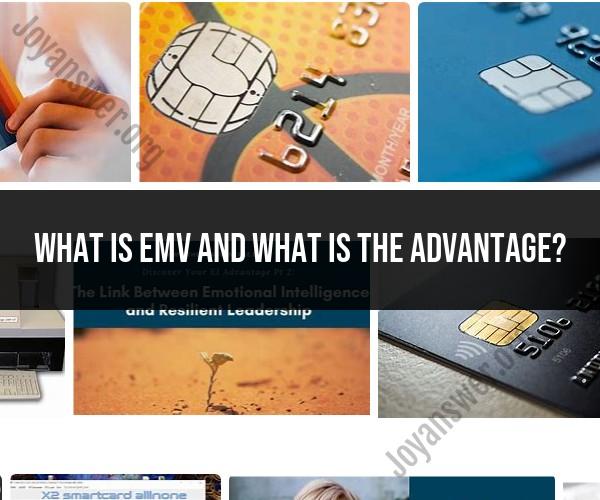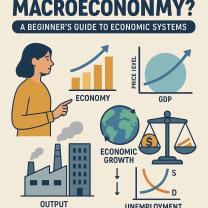What is EMV and what is the advantage?
EMV, which stands for Europay, MasterCard, and Visa, is a global standard for credit card and debit card processing and authentication. EMV technology is designed to enhance the security of card transactions and reduce the risk of fraud. Here's an explanation of EMV and its advantages and benefits:
EMV Chip Card Technology:EMV chip cards are payment cards (credit and debit) that contain a small embedded microprocessor chip. Unlike traditional magnetic stripe cards, EMV chip cards use a dynamic authentication process for transactions, making them more secure.
Advantages and Benefits of EMV Technology:
Reduced Fraud: EMV technology is highly effective in reducing certain types of card-present fraud, such as counterfeit card fraud. The dynamic authentication process makes it challenging for fraudsters to create counterfeit EMV cards.
Increased Security: EMV cards provide a higher level of security compared to traditional magnetic stripe cards. The chip generates a unique code for each transaction, making it nearly impossible for criminals to reuse transaction data for fraudulent purposes.
Global Acceptance: EMV technology is widely accepted around the world. Many countries have adopted EMV standards, making it easier and more secure for international travelers to use their cards.
Authentication Methods: EMV cards can support various methods of authentication, including chip and PIN (entering a personal identification number) or chip and signature (signing a receipt). These methods add an extra layer of security.
Contactless Payments: Many EMV chip cards are also equipped with contactless payment capabilities, allowing for quick and convenient "tap and go" transactions. This is especially useful for small-value purchases.
EMV Liability Shift: In some regions, there has been a liability shift that encourages the adoption of EMV technology. If a fraudulent transaction occurs, liability may shift from the issuer to the party (merchant or issuer) that has not adopted EMV technology.
Protection Against Card Cloning: EMV technology makes it extremely difficult for criminals to clone chip cards, unlike magnetic stripe cards, which can be easily copied.
Reduced Card-Present Fraud: The implementation of EMV technology has led to a significant reduction in card-present fraud, encouraging the adoption of more secure payment methods.
It's important to note that while EMV technology has improved security for in-person transactions, it does not address the risks associated with card-not-present transactions, such as online or phone transactions. To address these risks, additional security measures, such as two-factor authentication, are often used.
In summary, EMV technology enhances the security of card transactions by using dynamic authentication processes and making it more challenging for fraudsters to create counterfeit cards. This has led to a reduction in card-present fraud and improved security for cardholders and businesses.
What is EMV, and what advantages does it offer?
EMV, also known as Europay, MasterCard, and Visa, is a global standard for chip-and-PIN credit and debit cards. EMV cards contain an embedded microprocessor chip that generates a unique one-time code for each transaction, making them more secure than traditional magnetic stripe cards.
EMV offers a number of advantages over traditional magnetic stripe cards, including:
- Reduced fraud: EMV cards are more difficult to counterfeit and clone than magnetic stripe cards, making them less attractive to fraudsters.
- Increased security: EMV transactions are protected by strong encryption, making them more difficult to intercept and tamper with.
- Improved consumer protection: EMV cards offer consumers greater protection against fraudulent charges, such as chargebacks and liability limits.
How does EMV technology enhance payment security?
EMV technology enhances payment security by using a number of security features, including:
- Chip-and-PIN authentication: EMV cards require users to enter a personal identification number (PIN) to complete a transaction. This helps to verify the identity of the cardholder and reduces the risk of fraud.
- Data encryption: EMV transactions are encrypted, making it difficult for fraudsters to intercept and tamper with the data.
- Dynamic data generation: EMV cards generate a unique one-time code for each transaction. This helps to prevent fraudsters from using stolen card information to make fraudulent purchases.
What are the features and benefits of EMV chip cards?
EMV chip cards offer a number of features and benefits, including:
- Increased security: EMV chip cards are more secure than traditional magnetic stripe cards due to the use of chip-and-PIN authentication, data encryption, and dynamic data generation.
- Reduced fraud: EMV chip cards have been shown to reduce fraud rates significantly.
- Global acceptance: EMV chip cards are accepted worldwide, making them convenient for travelers and businesses.
- Enhanced features: EMV chip cards can be used for contactless payments and can store additional information, such as loyalty program rewards.
How to use EMV technology for secure transactions?
To use EMV technology for secure transactions, simply insert your EMV chip card into the chip reader and enter your PIN when prompted. If the merchant does not have a chip reader, you may be able to swipe your card instead. However, it is important to note that swiping your card is less secure than using the chip reader.
Here are some tips for using EMV technology for secure transactions:
- Be aware of your surroundings when making a transaction.
- Cover your PIN when entering it into the chip reader.
- Do not let your card out of your sight.
- Report any suspicious activity to your bank or credit card company immediately.
What is the impact of EMV adoption on reducing fraud?
EMV adoption has had a significant impact on reducing fraud. In the United States, fraud rates have decreased by over 60% since the introduction of EMV chip cards in 2015.
EMV adoption has also helped to reduce fraud in other countries. For example, in Canada, fraud rates decreased by over 70% after the introduction of EMV chip cards in 2010.
Overall, EMV technology is a highly effective way to reduce fraud and improve payment security.











